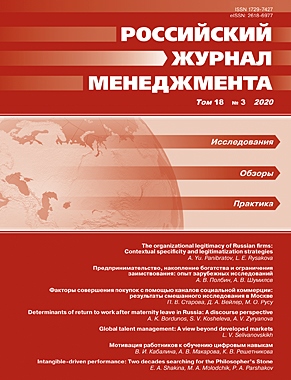Intangible-driven performance: Two decades searching for the Philosopher's Stone
DOI:
https://doi.org/10.21638/spbu18.2020.307Аннотация
The study offers a structural literature review on the twenty years the evolution of the fast-growing research topic of intellectual capital (IC) and intangible-driven performance. Despite a rather short independent history, the IC concept has undergone a substantial transformation, bringing to the discussion vast empirical and methodological literature. Several endeavors carrying out literature review studies could only partially satisfy the needs of the systematization of the relevant research. Hence, there is still a large room for such kind of analysis due to the increasing number of new papers published in the area and puzzle of IC-related sophistications. To draw a holistic picture of the landscape of IC and associated corporate performance, this study departures from the mixed research methodology embracing elements of machine-learning tools and in-depth qualitative interpretation of obtained results and critical discussion of the most influential studies in the field. Our findings demonstrate that four professional outlets selected for the examination have generated four relatively isolated research topics: “Human capital and performance”, “Knowledge sharing, organizational learning: processes that drive performance”, “IC and knowledge management for business performance”, “Measurement, disclosure of IC and knowledge for business performance”. All these research lines are welcomed by all leading journals in the field, having high potential to create a dense flow of conceptual and empirical contributions and practical value for a knowledge-intensive business.
Ключевые слова:
literature review, intangible-driven performance, text-mining, topic modeling
Скачивания
Библиографические ссылки
REFERENCES
Загрузки
Опубликован
Как цитировать
Выпуск
Раздел
Лицензия
Статьи журнала «Российский журнал менеджмента» находятся в открытом доступе и распространяются в соответствии с условиями Лицензионного Договора с Санкт-Петербургским государственным университетом, который бесплатно предоставляет авторам неограниченное распространение и самостоятельное архивирование.





